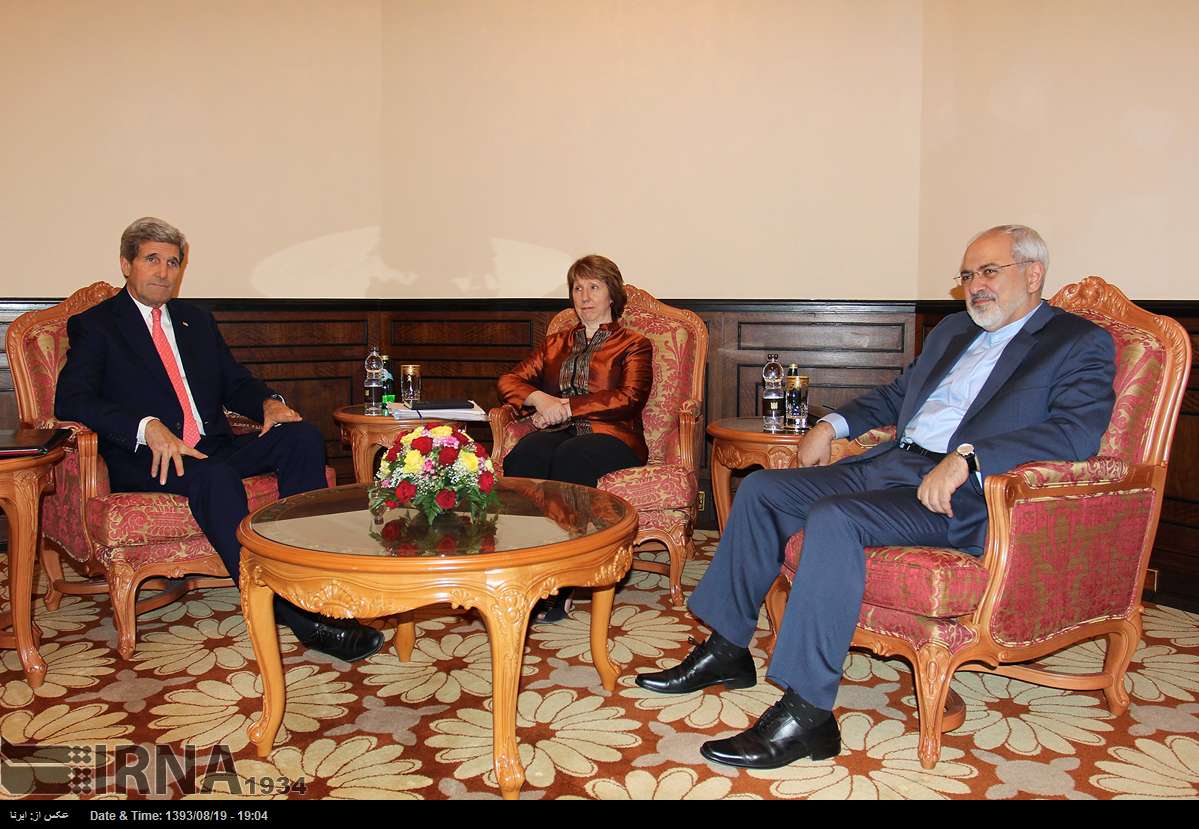 The ninth round of talks between Iran and the so-called P5+1 group of world powers ended on Tuesday without a breakthrough to seal a deal over Iran's nuclear programme ahead of a 24 November deadline.
The ninth round of talks between Iran and the so-called P5+1 group of world powers ended on Tuesday without a breakthrough to seal a deal over Iran's nuclear programme ahead of a 24 November deadline."It would be wrong to speak about any kind of major progress" at the Oman talks, but "there was no setback, no disruption and no deadlock," Russian Deputy Foreign Minister Sergei Ryabkov told Russia's RIA Novosti news agency.
Moreover, as German Foreign Minister Frank-Walter Steinmeier said, the West was facing a "make-or-break moment" to reach a deal with Iran over its nuclear programme.
While the likelihood of reaching a comprehensive package is low, it is still possible for the sides to agree on the general outlines of a nuclear accord before the deadline.
At the moment the key sticking points to a deal are twofold: the need to resolve issues of uranium enrichment capacity, and the timing and pace of the removal of sanctions.
With major progress already achieved in previous rounds of talks, other questions such as limits on enrichment levels, size of uranium stockpiles, and allowing inspections at Iran's Fordo nuclear plant can be resolved if the two inter-related issues can be worked out.
Three-phase approach
There are ways this can be done. The principle should be that transparency and confidence-building measures by Iran and sanctions relief by the world powers go hand-in-hand and can be adjusted in a reciprocal fashion. This could be achieved through a phased approach:
World powers fear plutonium from Iran's facility in Arak could be used to make a bomb
Phase one
For immediate implementation after a deal is signed. In this phase, Iran should:
- Agree to the provisional implementation of the Additional Protocol of the nuclear Non-proliferation Treaty (NPT) - which includes snap visits by International Atomic Energy Agency (IAEA) inspectors - signed but suspended by Iran in 2007
- Agree to provisional implementation of the modified Subsidiary Arrangement (Code 3.1) to the IAEA's Safeguards Agreement - requiring signatory states to report any decisions to build new nuclear facilities but suspended by Iran since 2007
- Continue to cap uranium enrichment at 5% as agreed in November 2013
- Begin converting the enrichment site at Fordo to an R&D site
- Begin technical conversions at the heavy water facility at Arak to limit the production of plutonium, (material which can be used in a nuclear weapon)
- Begin addressing the Possible Military Dimension issues (PMDs) of Iran's nuclear programme with the IAEA
- Continue not to reprocess spent nuclear fuel at the Arak plant
- Begin limiting the current stockpiles of uranium to the level of practical needs
- Cap the enrichment capacity at the current operational level of about 9,400 centrifuges and not activate the other 12,000 already installed but not operational
These measures would guarantee the maximum level of Iran's transparency and no so-called "breakout" capability - ie rush to make a bomb.
In return, the world powers should suspend all unilateral and multilateral sanctions.
Phase two
For implementation over a possible six-month period. In this phase Iran should:
- Complete a technical redesign of Arak heavy water facilities which would lower the current capacity of 10kg plutonium production to 1kg per year
- Complete conversion of Fordo as an R&D site
- Resolve PMD issues with the IAEA
- Approve Additional Protocol in the cabinet and submit to Parliament.
In return, the world powers should lift all sanctions imposed by European Union and the United Nations Security Council's economic sanctions, while the US unilateral sanctions remain suspended.
The IAEA says Iran has not yet answered outstanding questions about its nuclear programme
Phase three
Phase three, as the final phase, should be completed before the end of President Barack Obama's term in office. In this phase Iran should:
- Ratify the Additional Protocol by Parliament
- Approve at Cabinet level the Safeguard Agreement Code 3.1
- Commit to cap the level of the enrichment at 5% for a longer period to be agreed by negotiations
- Commit not to reprocess spent fuel at Arak for a longer period to be agreed by negotiations
- Commit to cap the stockpile of uranium at a level that is needed for domestic practical needs a longer period to be agreed by negotiations
'Maximum transparency'
While Iran does not need to reprocess and enrich beyond 5% for many years, a longer period on these three phases would meet the world powers' demand for longer duration of confidence-building measures on no "breakout".
In return, the US should lift all unilateral sanctions suspended in phase one and the UNSC should lift the proliferation sanctions and normalise the Iranian nuclear dossier at the United Nations and the IAEA.
The P5+1 needs assurances of maximum transparency on the Iranian nuclear programme and confidence there will be no "breakout".
Iran's two main objectives are respecting its rights for peaceful nuclear technology, including enrichment, and lifting the unilateral and multilateral related sanctions.
This package includes the two key objectives of the world powers and Iran with a realistic timetable and proportionate reciprocations.
This article was written by�Seyed Hossein Mousavian for BBC on NOV. 16, 2014. Seyed Hossein Mousavian is a research scholar at Princeton University and a former spokesman for Iran's nuclear negotiators. His latest book, Iran and the United States: An Insider's view on the Failed Past and the Road to Peace, was released in May 2014.
The Iran Project is not responsible for the content of quoted articles.










